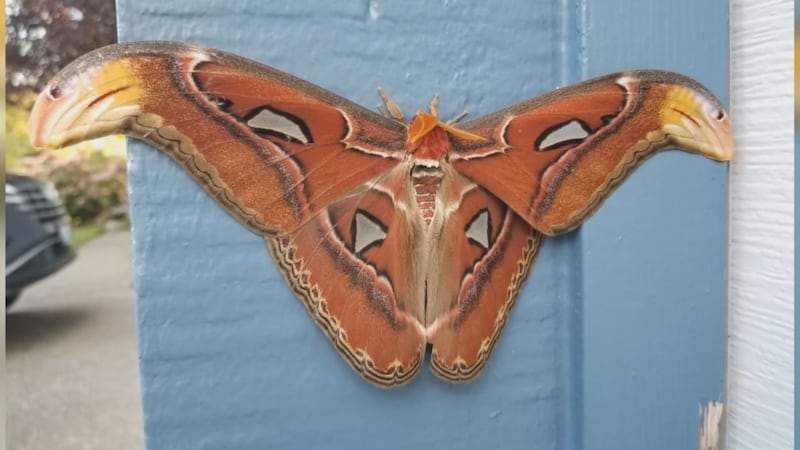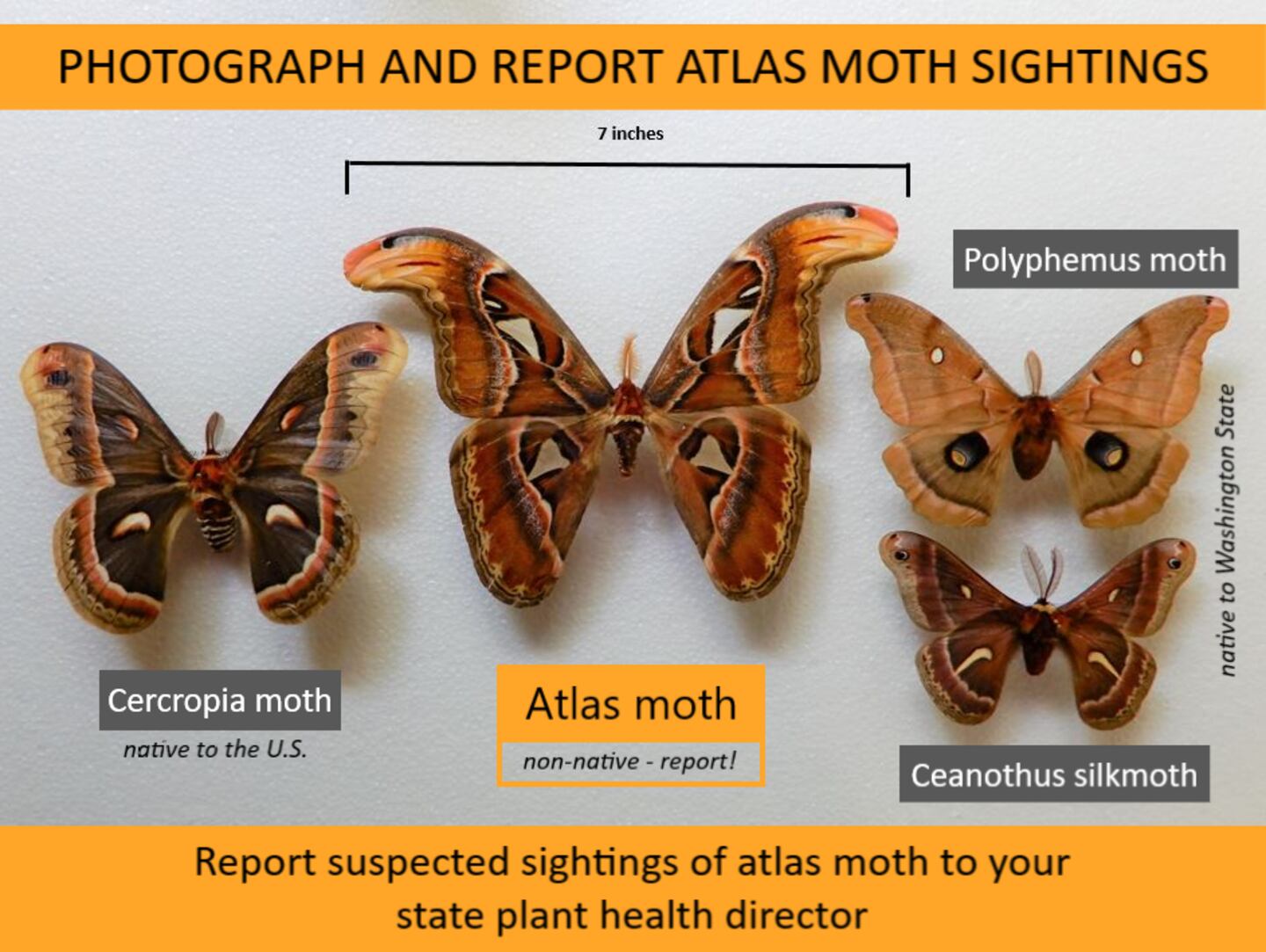BELLEVUE, Wash. — State agriculture officials and entomologists are asking the public to be on the lookout for the world’s largest known moth after one was seen in Bellevue last month.
A University of Washington professor initially reported a sighting of the atlas moth, which has a wingspan of up to nearly 10 inches, to the Washington State Department of Agriculture on July 7.
Once WSDA entomologists identified it as an atlas moth, they sent it to the WSDA, who confirmed the specimen as an atlas moth on July 27.
“This is a ‘gee-whiz’ type of insect because it is so large,” said Sven Spichiger, WSDA managing entomologist. “Even if you aren’t on the lookout for insects, this is the type that people get their phones out and take a picture of — they are that striking.”
This is believed to be the first confirmed detection of the moth in the U.S.
“This is normally a tropical moth. We are not sure it could survive here,” Spichiger said. “WSDA is gathering available scientific and technical information about this moth and will provide response recommendations, but in the meantime, we hope residents will help us learn if this was a one-off escapee or whether there might indeed be a population in the area.”
WSDA spokesperson Karla Salp says one caterpillar wouldn’t cause problems. However, an infestation of the invasive species could do some serious harm to local cherry and apple trees.
“They defoliate trees,” said Salp. “It could really impact our trade with other countries.”
Frequently, the massive moth can be seen by visitors at the Pacific Science Center. Back in July, there were about 30 fluttering around the Tropical Butterfly House. Experts there tell KIRO 7 the massive moth lives for only six days, but in that time, a female can lay 100 eggs. In a controlled environment, they can’t harm the ecosystem, but if those eggs become caterpillars outside, they can pluck trees clean of leaves.
WSDA is encouraging residents to photograph, collect and report atlas moths if they see them.
The moths do not pose a public health threat and can safely be photographed, handled and collected, according to the WSDA.
Washington residents who believe they have seen the moth are asked to send a photo to pestprogram@agr.wa.gov for identification and include the location where it was spotted.
The moths do not pose a public health threat and can safely be photographed, handled and collected, according to the WSDA.
Washington residents who believe they have seen the moth are asked to send a photo to pestprogram@agr.wa.gov for identification and include the location where it was spotted.
More news from KIRO 7
- Central Kitsap School District sued by former student over rape
- Fishing boat runs aground near Westport
- Detectives investigating after sexual assault in Delridge area
- Do you have an investigative story tip? Send us an email at investigate@kiro7.com
©2022 Cox Media Group









